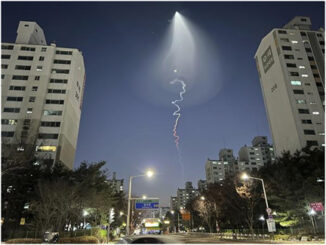Holashtak is said to be an important day in Hinduism. Holashtak falls in the month of Falgun in Hinduism. The months of February and March are in the Gregorian calendar. Holashtak is made up of two words, Holi and Ashtak i.e. a festival of 8 days. The eight days before the Holi festival are called Holashtak. It can be said that the first information about the arrival of Holi festival is received from Holashtak itself. With the Holi festival in Holashtak, the preparations for Holika Dahan also start.
No auspicious work is done on the days of Holashtak. It can be said that 8 days of Holashtak are considered inauspicious. Therefore, during this time no auspicious work is done like marriage, engagement, home entry, purchase of a new house, purchase of vehicle, land worship, start of new business etc.
2023 Holashtak dates
Holashtak will begin on Monday, 27 February 2023.
Holashtak will end on Tuesday, 07 March 2023.
Holashtak ends with Holika Dahan. This festival is celebrated with Rang and Gulal. The festival of Holi itself starts from Holashtak and continues till Dhulandi. An atmosphere of joy and celebration builds up everywhere. On this day, along with the preparations of Holi, Holika Dahan preparations are also started.
Kamadeva’s story
According to the legend, Kamadeva had broken the penance of Lord Shiva at the behest of Lord Indra and being angry with this, Lord Shiva had burnt Kamadeva, the god of love with his third eye, on the Ashtami date of Falgun. Kamadeva’s wife Rati worshiped Shiva for 8 days and prayed to revive Kamadeva which was accepted by Lord Shiva. Due to this tradition, these 8 days are considered taboo for auspicious works.
Story of Bhakta Prahlad
According to the legend, King Hiranyakashipu had tormented his son Prahlad during these eight days to turn his son Prahlad away from his devotion to Lord Vishnu. On the eighth day, Holika, the sister of Hiranyakashipu, had a boon that she could not be burnt by fire. But when Holika, taking the devotee Prahlad in her lap, sat in the fire and got burnt. By the grace of Lord Vishnu, the devotee Prahlad was saved from the fire. Therefore, no auspicious work is done during these 8 days.
These works are not done on Holashtak
Holashtak is mainly celebrated in the regions of Punjab and Northern India. While some important tasks begin from the day of Holashtak, at the same time, there are some tasks that are not done at all in these eight days. This prohibition period lasts from the day of Holashtak to the day of Holika Dahan.
As per Hindu tradition any auspicious activity as well the Hindu sixteen Sanskaras are not carried out during the period of Holashtak. It is believed even if the last rites of a person are to be performed on this day then before that Shanti Puja needs to be done, only then the last rites can be carried out. This period is not considered auspicious as Sanskaras are not allowed in this period.
At the time of Holashtak, there has been a law to not perform any of the auspicious works and sixteen rites, as stated in Hindus. It is believed that if the funeral is to be performed on this day, then peace work is done first for that. Only then do the rest of the work. This period is not considered auspicious because of the ban on samskaras.
Auspicious activities like marriage, engagement, conception ceremony, initiation of education, ear piercing, naming, construction of a new house or house warming should not be done during this period. According to astrology, there is a lack of auspicious Muhurats in these eight days.
The period of Holashtak is considered suitable for either meditation or devotion. This period is considered ideal for penance. It is considered extremely auspicious to observe Brahmacharya in this period. There is also a tradition of Snan and Daan in this period.
Why are auspicious works not done on Holashtak
Auspicious and Mangalik works are not allowed on Holashtak. Auspicious Muhurats are not found in this period. These eight days are not considered auspicious. Manglik events are stopped due to lack of auspiciousness at this time.
According to mythology, Hiraikashyapa, the king of demons, tells his son Prahlada not to worship Lord Shri Vishnu. Prahlada does not obey his father and continues to worship Vishnu with full devotion. This annoys Hiraikashyapa. He tortures Prahlada in many ways for eight days from the Ashtami of the Shukla Paksha of Phalgun month to Purnima. He even tries to kill his own son. However, because of Prahlad’s undivided devotion to Lord Vishnu, he is protected by Lord Vishnu each time.
On the eighth day i.e. Phalgun Purnima, Hiranyakaship entrusted his sister Holika with the responsibility to kill Prahlad. Holika was blessed with the boon that fire will not harm her. Holika takes Prahlad in her lap and sits in the fire. But Lord Shri Vishnu once again saves his devotee. Holika dies in that fire, but Prahlad comes out completely unharmed. For this reason, the eight days before Holika Dahan are called Holashtak and are not considered auspicious.
Activities that can be done in Holashtak
Among the several tasks that are undertaken during Holashtak, collecting wood for Holi Dahan is the most important task. A place for Holi Dahan is selected, it is purified eight days before Holi. After that Upla, wood and Holi sticks are placed in that area. This day marks the beginning of Holashtak.
This tradition may not be seen much in the cities, but in rural areas it is prevalent even today. You will find Holi Dahan Pandals at every nook and corner, crossroads etc. in villages. Intersections of various areas or localities primarily have the Holi Dahan Pandal. Every day from the beginning of Holashtak wood is placed at the area dedicated for Holi Dahan. In this way, after eight days a huge pile of wood is prepared.
According to the scriptures, fasting and donations at the time of Holashtak relieve one from suffering. Donating clothes, food grains, money etc. according to one’s capacity these days gives favorable results.
Holashtak Mythological Significance
From Phalgun Shukla Ashtami to Holika Dahan i.e. Poornima, Holashtak remains. From this day the weather begins to change. Winter departs and summer commences. The fragrance of the arrival of spring is felt in the atmosphere. The air is ripe with the smell of flowers. In the case of Holashtak, it is believed that Holashtak started from the day on which Lord Shri Bhole Nath destroyed Kama Dev in anger. Lord Shri Vishnu is worshiped on this day. The story of Holashtak relates to Hariyanyakashipu and Prahlada. Holashtak becomes the center of a long spiritual process of these eight days, which leads the devotee to ultimate knowledge.





Be the first to comment